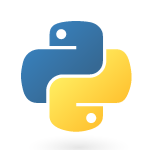
Pandas DataFrames 101
I like to write today about a topic that I used quite frequently within the last weeks/months: pandas DataFrames. At some point in your automation story, you need some data for whatever reason. One example are connection data for some devices. Another example might be the collection of configuration information. I think you know that many people use Excel for this purpose and today, I like to show you, how you can work with DataFrames. In my next post, I show you how to read and work with data from an Excel file.
